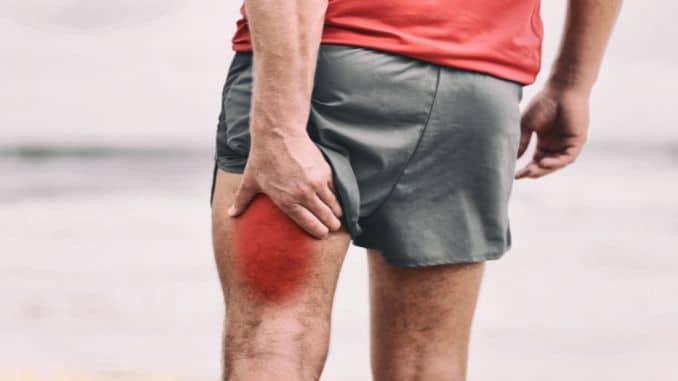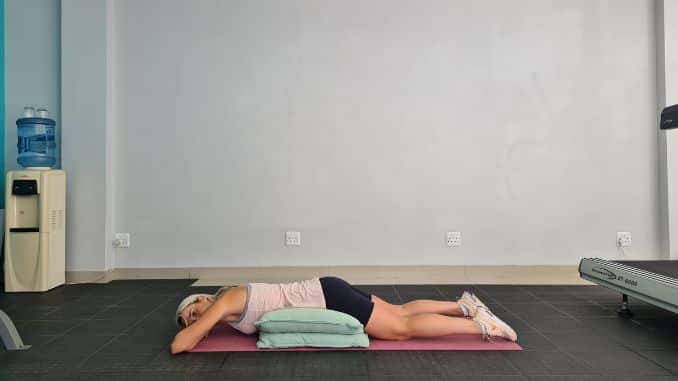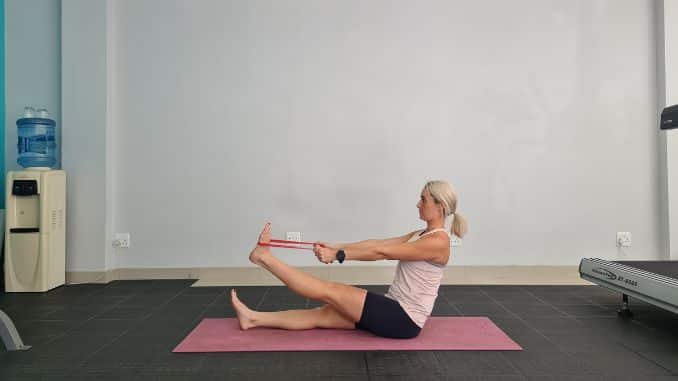
Are you an athlete? A Runner? A Sprinter? Or a Soccer Player? How about a Football Player? If yes, you might have experienced or heard about continuous hamstring pain after playing or doing these sports.
Now you may be wondering why this happens when you always make sure you do proper stretches before playing. The answer lies in many factors. Here’s why:
Meet Your Hamstring Muscles
Understanding the anatomy of the hamstring muscle is essential to understand why this happens to you.
The Hamstrings are a group of muscles composed of the Biceps femoris, Semimembranosus and Semitendinosus. It is located at the back of the thigh, originates from the hip, and inserts in the knees. These muscles are activated when you walk, run, sprint, climb stairs, squat, and perform other leg movements. However, its primary function is to bend the knees and extend and rotate the hips.
The Biceps femoris is the most superficial among the three hamstring muscles. Its primary function is to flex your knee, extend the thigh at your hip and rotate your lower leg from side to side when your knee is bent.
While the semimembranosus’ primary function is to flex your knee joint, extend your thigh at your hip, and perform medial rotation for your hip and lower leg together with the Semitendinosus. The Semitendinosus is located between the semimembranosus and the biceps femoris.
Playing sports, especially running and sprinting, which involves sudden stopping, slowing down, or changing directions, engage these muscles more. That is why these muscles are usually susceptible to soreness, pain, and other injuries. Incorporating hamstring strain exercises can help strengthen and prevent injuries.
How does Hamstring Strain happen?
Hamstring strain is usually caused by a sudden forceful stretch or a quick extensive contraction of the hamstring muscle group that produces high mechanical stress. It is common in sports like sprinting, running, football, and soccer, where it is a frequent injury. Mild hamstring pain could be bearable; however, on severe ones, it could be painful and not easy to walk or stand.
Causes of Hamstring Strain
1. No proper warm-up before playing
If you don’t have a proper warm-up before playing, your muscles become tight, and this causes a higher risk for strain than muscles that are kept flexible.
2. Overdoing it/ Out of Shape
Weak muscles can’t handle the stress if too much exercise is done, and tired muscles can’t absorb more energy, resulting in strain.
3. Poor technique
Having a poor technique, especially when running, may stress the hamstring muscles more
4. Returning to play after an injury
Any injury of the muscle needs plenty of time to heal properly. Returning to play before it happens will likely result in a hamstring strain.
Hamstring Strain Symptoms
- Sudden pain during exercise with a popping or snapping sound
- Pain in the back of the thigh and lower buttock when walking
- Tenderness, swelling, or bruising in the back of the thigh
- Weakness in the legs
How is a Hamstring Strain diagnosed?
To diagnose this, a Doctor or a Physical Therapist will examine you and ask questions about how the leg injury happened. The Physical examination will give out what grade of strain you have:
- Grade 1: Mild Strain
Pain upon leg movement with minimal swelling
- Grade 2: Partial tear of one or more of the hamstring muscles
Pain upon leg movement and limping due to pain with swelling, bruising
- Grade 3: Complete tear of one or more of the hamstring muscles
Presence of pain upon rest or activity, severe swelling, and difficulty in moving the leg or walking.
What’s the Treatment for a Hamstring Strain?
Fortunately, a hamstring strain can be healed with the help of Physical Therapy. Surgery is only needed when the hamstring strain is severe.
Things you can do after the injury:
- Rest – avoid putting more stress on your injured leg, limit walking, and may use crutches if needed.
- Ice the leg – In the first 48 hours, use ice or a cold compress over the strained muscle to reduce pain and swelling.
- Compression – use a bandage to compress the leg to reduce swelling
- Elevation – If you are sitting or lying down, you must elevate your leg; this reduces the swelling.
- Pain Medications – Non-steroidal anti-inflammatory drugs (NSAIDs) like ibuprofen (Advil, Motrin) or naproxen (Aleve, Naprosyn) could help with pain and swelling.
- Stretching and strengthening exercises – Having exercises could help prevent another hamstring strain. It could help to improve your leg’s strength and flexibility.
- Surgery – If it is a complete tear, surgery may be needed to fix or reattach a tendon.
What Exercises Can I Do?
1. Hamstring Curl
Lie on your stomach and place a pillow under your stomach. Bend your knee and put your foot up towards your buttock as much as possible. Then slowly repeat this 10 times, 1-2 sets.
 |
 |
2. Hamstring Extension
Stand facing a wall and put your hands on the wall at level with your chest. Alternatively, you can use a chair to hold on to. With your knees straight, put your injured leg in the back behind you, then put it in the starting position. Repeat this hamstring strain exercises 10 times, 1-2 sets.
3. Hamstring Stretch
Do a long sitting position on the floor. Prepare a resistance band or a towel. Put it under the ball and toes of that foot, and hold the other end of it. With your knees straight, pull the resistance band or towel towards you. You should feel a gentle stretch down the back of your leg. Hold this for 15-30 seconds, 10 repetitions, 1-2 sets.
Takeaway
Doing exercises or sports moderately is the key to avoiding this kind of injury. However, if it is inevitable, you must take precautions and ensure you do proper warm-up exercises before engaging in any exercise or sports.



